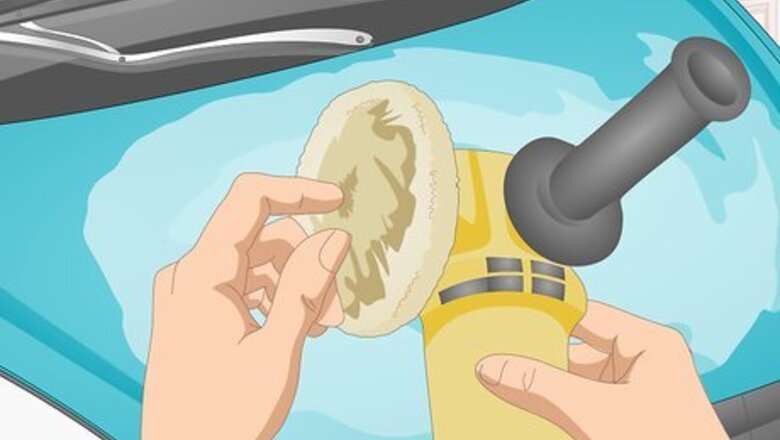
views
- To keep your polishing pad in good condition, stop and clean the pad when it gets saturated or matted with polish.
- If you're using a foam pad, hold a bristle brush against the pad and turn on the polisher.
- For wool buffing pads, use a buffing spur, then clean it the same way, by holding the spur against the pad, then turning on the polishing tool.
- Keep moving the brush or spur so you clean the inner and outer portions of the pad evenly.
- To deep-clean your polishing pad, spray it with buffing pad cleaner, let it soak for 3-5 minutes, then rinse the pad while scrubbing it gently with your thumbs.
Keeping Wool or Foam Pads Clean during Polishing
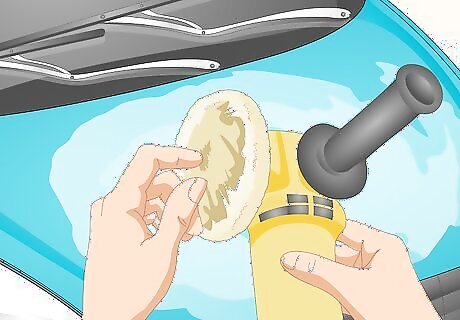
Stop polishing when the pad is completely saturated with polish. If the polishing pad is completely saturated with polish, it’s time to stop and clean it. For wool pads, you’ll need to do a quick cleaning when the wool appears matted down with polish. If you’re polishing a car, a pad should be cleaned after doing 2 sections (each section being roughly the size of a trunk lid). If you’re polishing floors, the pad should be quick-cleaned when you notice that the most recent floor section doesn’t look as polished as previous sections.
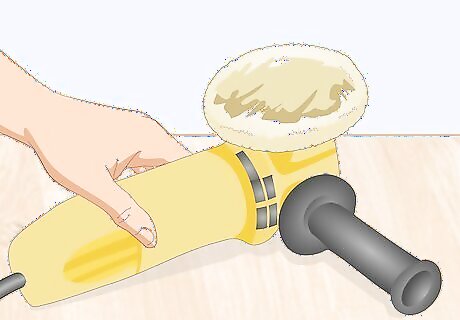
Flip the electric polishing tool over so the pad is facing up. You don’t need to remove the pad from the electric polishing tool. Cleaning your polishing pad between polishing sections of the car or floor will ensure it works evenly and effectively. Make sure you’re more than a few feet away from the vehicle so the dust from the pad doesn’t get onto the freshly polished paint.
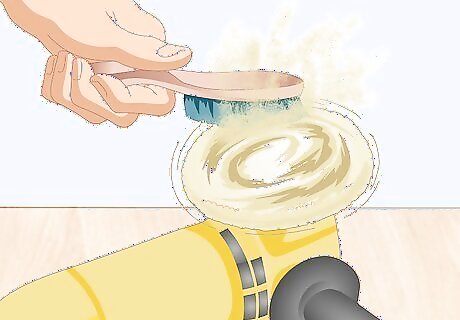
Hold a bristle brush against a foam pad and turn on the electric polisher. Gently push down with the brush to apply light pressure to the pad while it spins. Using a scrub brush will help remove residue without harming the pad. Avoid applying too much pressure with the brush because it might damage the foam on the pad. If you’ve already removed the pad from the polisher, hold it in one hand and scrub the pad back and forth with a plastic bristle brush with your other hand. Note that this procedure is only recommended for foam polishing pads.
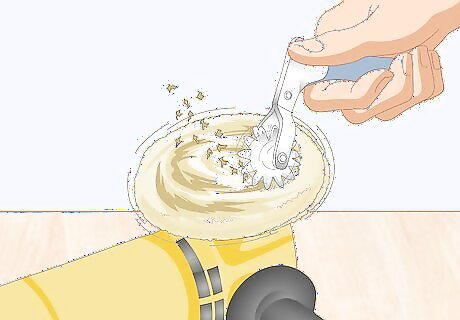
Use a buffing spur to quick-clean wool buffing pads. If you’re cleaning wool buffing pads, you’ll need to use a buffing spur to loosen bits of dirt and debris from the wool. Hold the spur to the wool pad with a light pressure and turn on the buffing tool so the pad spins around. You can purchase buffing spurs at any automotive or hardware store.
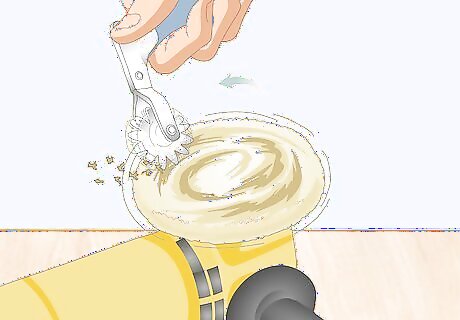
Move the position of the brush or spur to clean all areas of the pad. If you start by placing the brush toward the outer rim of the spinning pad, move it into the center part and back out again to ensure the scrubber has covered all areas of the pad. Do this for about 1 or 2 minutes or until the polishing side of the pad is back to its original color. If you’re using a buffing spur for a wool pad, move the spur all over the surface of the pad until the wool is no longer matted with polishing product. Make sure to hold the polisher firmly in one hand while you’re doing this. You can also hold it in place on a work table or other flat surface.
Deep-Cleaning Pads after Polishing
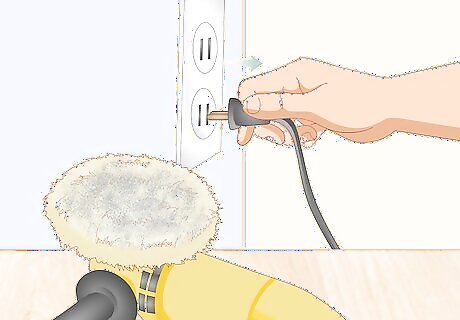
Unplug the polishing tool before removing the pad. Cut the power to the polishing tool so you don’t accidentally turn it on while you’re trying to remove the pad. Use an outlet or power strip that you can easily get to so you can unplug it when you’re not using it. Note that this deep-cleaning procedure will work for foam, wool, and microfiber polishing pads.
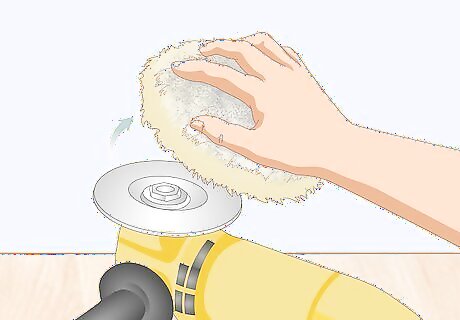
Remove the pad from the polishing tool. Unlock your polisher’s locking mechanism that holds the buffing pad in place. Once it’s unlocked, spin the buffing pad to the left until it falls off on its own. Refer to your buffer’s user manual to see how to remove buffing pads for your particular model.
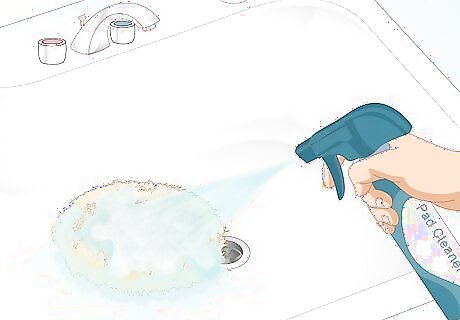
Spray the polishing surface of the pad with specialty buffing pad cleaner. Make sure to place the pad polishing-side up before you spray it. Spray at least 6 or 7 times until the entire surface of the pad is wet but not completely soaked or dripping. You may want to place the pad in a utility sink while you spray it (i.e., a sink that isn’t used for dishes, cooking, or other food-related purposes). You can purchase cleaner made especially for buffing pads online or at any automotive or hardware stores. Some manufacturers make specific cleaning solutions for wool and foam polishing pads, and some focus on car or floor pads, so get the one that best suits your needs.
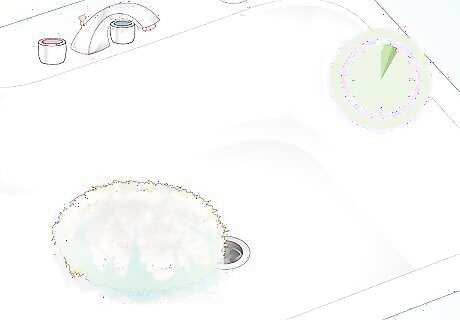
Let the cleaning formula soak into the pad for 3 to 5 minutes. Allow the cleaning solution some time to soak down into the pad and loosen bits of dirt and debris. Leave the pad sitting in the utility sink while the formula soaks in (don’t turn on the water yet). Most polishing pad cleaning sprays have a pungent smell, so take this time to open a door or window if you like.
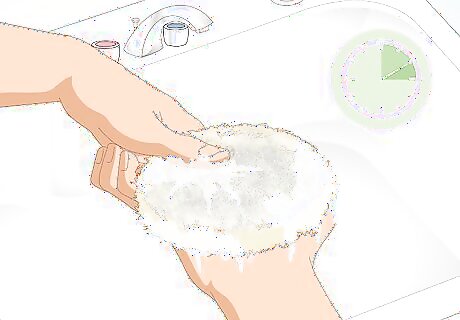
Massage the cleaning solution into the pad for 10 to 15 seconds. Hold the pad over the sink with both hands and massage the solution into the surface of the pad with your thumbs. Make sure to massage the entire surface of the pad. Start with your thumbs together and move them apart before circling them back together again (think of it like a rolling, kneading motion).

Rinse and massage the pad under running water for about 1 minute. Turn on the faucet and hold the pad in both hands with the polishing side facing upward. Then, gently massage it with your thumbs while the water penetrates the pad. You should see dirty water coming out of the pad as you massage it.
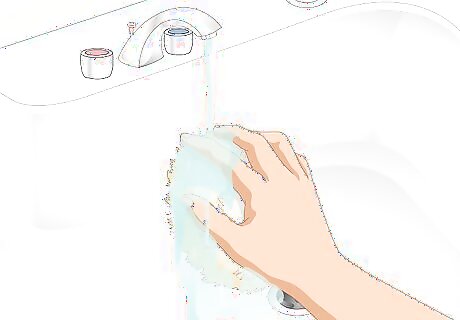
Hold the pad under running water until it’s saturated and squeeze it out. Do a final rinse of the pad by holding it under the faucet until it’s completely saturated with water. Then, turn off the faucet and squeeze as much water as you can out of the pad. If you see areas with lingering dirt or residue, repeat this rinsing process again, massaging those sections until the dirt is gone.
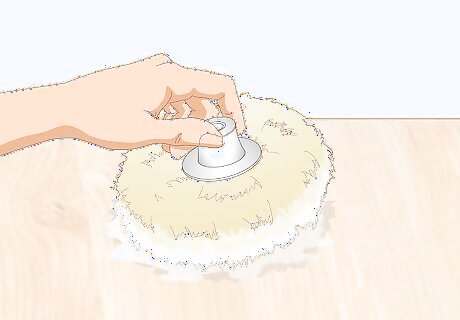
Lay the pad polishing-side down onto a surface to dry. Place the pad with the polishing side down so the water doesn’t seep into the glue that holds the foam to the backing. Let the pad sit for 12 to 24 hours or until it’s fully dry. It may help to wrap the pad in a microfiber towel and squeeze it to remove excess moisture. You can also attach the damp pad to a polisher and set it to a medium speed for 20 to 30 seconds to help it dry faster. Hold the machine head down into the sink so water doesn’t sling everywhere. As an alternative, you can put the damp pad in the dryer on low or no heat for 10 to 20 minutes, but just know that it might cause shrinkage.




















Comments
0 comment